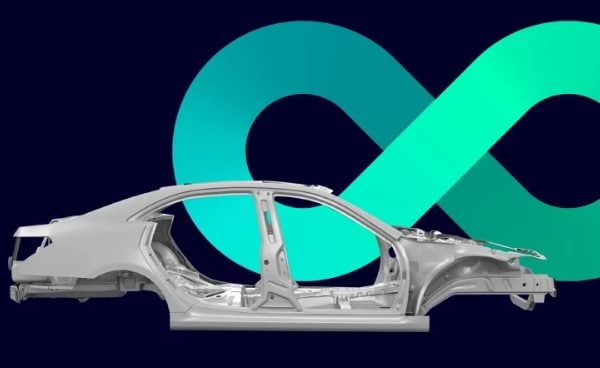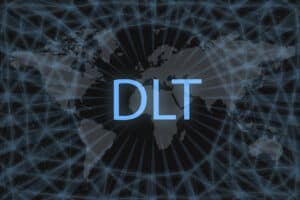Blockchain is revolutionizing the world.
It is one of the biggest technology markets worldwide, with prospects to
continue growing and eventually reaching 23.3 billion dollars’ worth of
investments by 2023, according to Statista.
In the future, the rapid growth in investments will encompass many
different industries, and blockchain will become a mainstream technology.
See also: How Blockchain Technology and Cognitive Computing Work Together
Currently, however, different industries are only at the early stage of introducing blockchain technology to different procedures and operations. According to Deloitte’s 2018 global blockchain survey, blockchain technology is expected to revolutionize many industries. It is anticipated that by using blockchain, industries will completely change the way they function.
According to Deloitte’s survey, manufacturing industries, as well as the
energy sector, along with healthcare, technology, and even the public sector (governmental
institutions, executive branch), will eventually turn to blockchain technology
to organize data, store it, and ensure its security.
But here’s what caught our attention, while analyzing this survey.
Interestingly enough, life sciences (biotech, medical devices, and
pharma) ranks high on the list of industries that will make use of blockchain.
The technological advancement in life sciences greatly impacts the quality of
healthcare, giving us new opportunities to improve it.
Let’s take a step further.
Technological advancement in engineering and computer science will give
us new opportunities in manufacturing, the energy sector, and other related
fields.
This pushes us to deduce the following thought: will science in general be changed by blockchain technology? And, if yes, what opportunities, prospects of implementation, and potential problems should we expect from it?
Let’s dig deeper.
Blockchain
for Science: Revolutionary Opportunities
Blockchain technology is versatile. Therefore, the whole
‘data-hash-previous hash’ system works for every transaction involving value,
whether it’s money, goods, or information. Besides, the high levels of security
ensure fraud protection, as every transaction is recorded and distributed among
the computer network.
As a result, these features of the blockchain technology offer the
following opportunities that can revolutionize science in different aspects.
Opportunity
#1: Making Research Transparent
The science behind blockchain is simple.
A set of blocks that contain data is shared in one network of parties
(nodes), which have equal and immutable access to the data carried by the
block.
What’s in it for scientific research?
Let’s say a group of researchers is working on a statistical analysis of
a certain business venture. They collect data that is stored in blocks, thus
creating a data-carrying blockchain for this research.
Any changes that are made to this data will not go unnoticed, as every
researcher from the team can equally spot and track these changes.
Joris van Rossum, Director of Special Projects at Digital Science, says
that among the biggest benefits that blockchain can bring to scientific
research is eliminating
poor communication.
Right now, according to van Rossum, scientific research is at a very
deficient state. Blockchain gives an opportunity to change, as it ensures
reproducibility that is central for transparent scientific research.
Opportunity
#2: Making Data Storage Safer
Blockchain is designed in a way that ensures safe storage of any data
that every block contains. Hashes, which work as a protection device for the
data, are hard to tamper, thus keeping all research data safely stored.
Essentially, blockchain is a decentralized database of information. It
is decentralized because every node has full access to the data and any changes
that have been made. This includes any changes made involving the hashes of
every block, thus making it impossible to leak the information or corrupt it.
Blockchain technology also ensures an extra level of protection, as all
the data is broken into segments (shards), which are encrypted. Thus, any
classified research data can be safely stored in blocks, accessed, and tracked
by every node in the network.
Opportunity
#3: Making Science Transparent
Blockchain technology brings an opportunity to make the decisions and
the activity of scientific organizations more transparent by introducing
so-called smart contracts.
Distributed
ledger technology enables blockchain to store small computer
programs that track the data. Smart contracts are created in the form of
computer programs and are designed to cut the middleman in all data
transactions. Instead, this smart contract becomes the middle man, and all the
activity can be traced by the network of nodes.
The two main features that science and scientific research can benefit
from are that smart contracts in their nature are:
- Immutable
– once a smart contract is created, it can never be changed again. Let’s say
that a scientific organization started a smart contract with a governmental
funding organization. Scientific organizations often struggle to get funds
because of bureaucracy and frozen funds.
This
feature of smart contracts won’t allow any of the two parties to opt out of the
contract, change its terms, or terminate it. This means that every scientific
organization that was promised governmental funding will get it.
- Distributed
– this means that the output of a smart contract is
validated by all the nodes in the network. A single node cannot force the
contract to release the funds or terminate it because other people in the
network will spot this attempt and mark these actions as invalid.
Smart contracts are almost impossible to tamper with. As all the
activities are fixated and stored in blocks, it not only gets safer to store
this data but makes the general activity of scientific organizations more
transparent and organized.
Blockchain
for Science: Prospects of Implementation
All the above-mentioned opportunities have already found their
implementation in decentralized blockchain-based data storage.
Decentralized clouds started emerging recently, becoming a strong
competitor and a potential threat to centralized servers such as Google Cloud,
Dropbox, etc.
Decentralized cloud storage uses blockchain technology to:
- ensure security
- guarantee transparency
Essentially, all the above-mentioned opportunities, brought to science
and scientific research by blockchain, are already, in one way or another,
implemented by decentralized clouds.
Besides obvious reasons, like transparency and security, scientists and
researchers could be interested in decentralized clouds for the following reasons:
- Prevention
of file loss through redundancy in data. Extensive scientific research
means collecting and storing a lot of data. Naturally, some data can go missing
or get deleted by mistake. The blockchain technology used in decentralized
clouds prevents this from happening, as all the data is stored in many copies.
- Reduced
costs. Scientific organizations often have to tighten the belt
and cut expenses due to limited funds. Thus, such organizations often don’t
have access to high-quality storage technology. Decentralized cloud storage
costs 50% less than centralized servers, thus giving scientific organizations
access to cutting-edge technology (decentralized storage StorJ costs $0.015
GB/month, compared to their competitor Microsoft Azure, which costs $0.030
GB/month).
- High
speed. IPFS (InterPlanetary File System), for instance, allows
the nodes to form a network and have access to their distributed file system
via FUSE and HTTP, and a variety of other ways, making it faster to exchange
this data.
Since blockchain technology is behind this idea, every file in
decentralized cloud storage is marked with a hash, and every other file
contains a hash from a previous file. Thus, any scientific organization, or
even a small group of researchers, can be sure that every file is safely stored
and won’t go missing.
Blockchain
for Science: Potential Problems
Alongside with the above-mentioned advantages, the implementation of
blockchain technology can potentially cause problems. Aside from the fact that
science is currently not fully ready for blockchain
adoption, the technology itself is still underdeveloped, which may lead to the
following issues.
Problem
#1: Authorization Issues
The goal of blockchain technology is to encrypt and safely store the
data and establish consensus in a distributed network.
To prove that a network member has permission to write to a certain
chain, it is required to run complex algorithms that will ensure rightful
authorization. Such algorithms take immense amounts of computing power, which
comes at a cost.
So, even if blockchain technology can solve the
problems of securing and storing the data for scientific research, the
authorization of each network member remains an issue.
Problem
#2: Lack of Legislation
As scientific society follows certain rules established by law, using
blockchain technology may present certain legislation-related
issues:
- Jurisdiction
issues. Blockchain technology is not limited by jurisdictional
boundaries. Here’s a hypothetical case. One node from the network can be
located anywhere in the world. If this node comes from a country where there’s
a lack of law regulations for blockchain, any litigation, connected to the use
of blockchain technology, will be hard to resolve.
- Intellectual
property. In case blockchain vendors (decentralized cloud storage
providers, for instance) decide to commercialize the underlying data set, this
jeopardizes intellectual property and data safety.
- Data
privacy. Dwelling more upon data safety, blockchain technology
presents some privacy-related issues. In case one block contains private data,
the question is how this data can remain private if several other network nodes
have access to it.
All these issues need further clarification and the development of
legislation that will cover and resolve them.
Problem
#3: Potential Hacker Attacks
Although blockchain is considered one of the most secure technologies in
the world, there’s a possibility that a blockchain can be hacked.
This happened to Coinbase and Ethereum Classic when a hacker gained
control of more than half of the network’s computing power. Covering this
story, MIT
Technology Review listed the reasons that could potentially
undermine the security of the blockchain technology:
- lack of protocol security
- bugs
- human error
Although now it is the best solution to ensure security, blockchain
technology is far from being perfect. Before switching from a centralized
server to decentralized cloud storage, researchers should understand that
although the chances of research information getting hacked are lower, it is
still possible.
Blockchain Brings New Potential to Science
Apart from some issues, blockchain technology brings a variety of
benefits to the scientific community. Every researcher knows that effective
communication, transparency, and data security are crucial for high-quality
research.
Although blockchain technology is still evolving, it can already offer
many advantages to the scientific community. And, as the evolution of
blockchain technology shows no signs of stopping, we can safely say that one
day it will become integral for scientific research and science in general.

















 Best Practices for Deploying and Scaling Industrial AIArtificial Intelligence (AI) is transforming industrial operations, helping organizations optimize workflows, reduce downtime, and enhance productivity. Different industry verticals leverage AI in unique ways.Link to The Center for Adaptive Edge Intelligence
Best Practices for Deploying and Scaling Industrial AIArtificial Intelligence (AI) is transforming industrial operations, helping organizations optimize workflows, reduce downtime, and enhance productivity. Different industry verticals leverage AI in unique ways.Link to The Center for Adaptive Edge Intelligence The Center for Adaptive Edge IntelligenceAdaptive edge intelligence brings real-time decision-making to the point of data creation, whether from sensors, machines, or cameras.Link to The Value of Vehicle Electrification
The Center for Adaptive Edge IntelligenceAdaptive edge intelligence brings real-time decision-making to the point of data creation, whether from sensors, machines, or cameras.Link to The Value of Vehicle Electrification The Value of Vehicle ElectrificationElectric vehicles (EVs) present automakers with many design, engineering, and manufactu ring challenges.Link to Accelerating Manufacturing Digital Transformation with Industrial Connectivity and IoT
The Value of Vehicle ElectrificationElectric vehicles (EVs) present automakers with many design, engineering, and manufactu ring challenges.Link to Accelerating Manufacturing Digital Transformation with Industrial Connectivity and IoT Accelerating Manufacturing Digital Transformation with Industrial Connectivity and IoTDigital transformation is empowering industrial organizations to deliver sustainable innovation, disruption-proof products and services, and continuous operational improvement.Link to Smart Manufacturing for Automotive
Accelerating Manufacturing Digital Transformation with Industrial Connectivity and IoTDigital transformation is empowering industrial organizations to deliver sustainable innovation, disruption-proof products and services, and continuous operational improvement.Link to Smart Manufacturing for Automotive Smart Manufacturing for AutomotiveLeading a transportation revolution in autonomous, electric, shared mobility and connectivity with the next generation of design and development tools.Link to Center for Data Pipeline Automation
Smart Manufacturing for AutomotiveLeading a transportation revolution in autonomous, electric, shared mobility and connectivity with the next generation of design and development tools.Link to Center for Data Pipeline Automation Center for Data Pipeline AutomationAs businesses become data-driven and rely more heavily on analytics to operate, getting high-quality, trusted data to the right data user at the right time is essential.Link to Center for Automated Integration
Center for Data Pipeline AutomationAs businesses become data-driven and rely more heavily on analytics to operate, getting high-quality, trusted data to the right data user at the right time is essential.Link to Center for Automated Integration Center for Automated IntegrationThe goal of automated integration is to enable applications and systems that were built separately to easily share data and work together, resulting in new capabilities and efficiencies that cut costs, uncover insights, and much more.Link to Continuous Intelligence: Insights
Center for Automated IntegrationThe goal of automated integration is to enable applications and systems that were built separately to easily share data and work together, resulting in new capabilities and efficiencies that cut costs, uncover insights, and much more.Link to Continuous Intelligence: Insights Continuous Intelligence: InsightsDigital transformation requires continuous intelligence (CI). Today’s digital businesses are leveraging this new category of software which includes real-time analytics and insights from a single, cloud-native platform across multiple use cases to speed decision-making, and drive world-class customer experiences.
Continuous Intelligence: InsightsDigital transformation requires continuous intelligence (CI). Today’s digital businesses are leveraging this new category of software which includes real-time analytics and insights from a single, cloud-native platform across multiple use cases to speed decision-making, and drive world-class customer experiences.


















